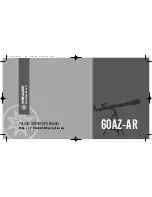
Niemals mit dem Teleskop in oder in die Nähe der Sonne blicken:
E
rblindungsgEfahr
!
14
14
OBSERVATION
tube (10, Fig. 1a) can be swivelled. Now turn the tube until it points to
the north and ideally to the North Star (Polaris). Then close the clamps
again. More information on finding the North Star in the accompanying
booklet (download via link on p. 2).
4. If you have not already done so, determine the latitude of your obser-
vation location. Use the adjustment screws for the latitude (27, Fig. 1d)
to adjust the telescope mount, so that the pointer points exactly to the
correct latitude of your observing site on the latitude scale (28, Fig. 1d).
More information on latitude determination in the additional literature
(download via link on page 2).
5. If steps 1 through 4 have been performed reasonably accurately, your
telescope is now sufficiently well aligned with Polaris, the North Star,
and you can begin making observations.
Once the mount has been aligned with the polar star as described above,
it is not necessary to adjust the latitude setting again, unless you move
your observation to a completely different geographical location (different
latitude setting required).
IMPORTANT NOTE:
For almost all astronomical observing requirements, approximate estimates
of latitude are quite acceptable. So don't let excessive attention to the
exact position of the polar star take away the joy of your telescope.
Fig. 16b: The parallactic home
position seen from the north. The
RA axis and the parallel tube point
to the polar star (Polaris).
Fig. 16a: The parallactic home
position, side view
Mount in the
balance
bring
Align the tripod leg under
the counterweight rod,
facing north.
Align the tube
to the north
Align the coun-
terweight rod
so that it points
towards the
floor
North
Polaris

































